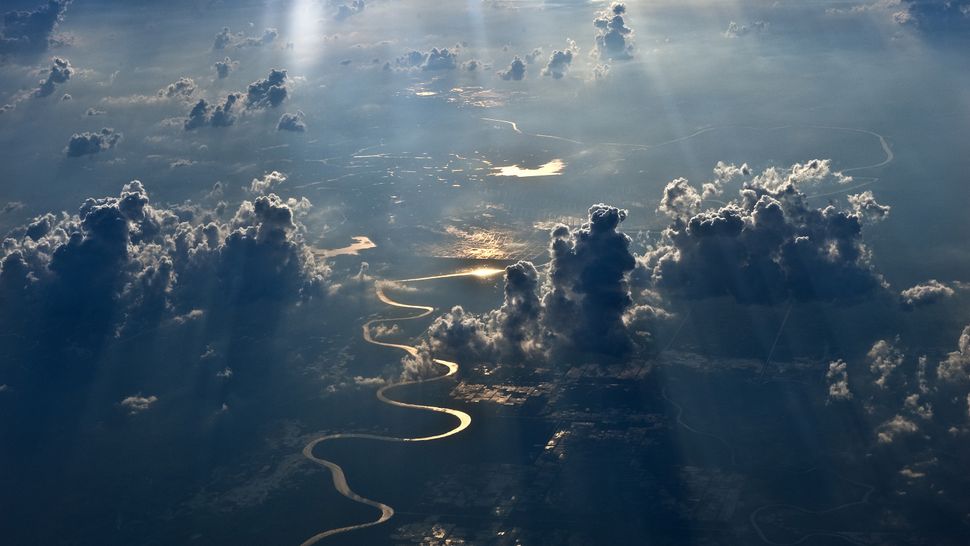Long-lost 'Island of Gold' resurfaces in Indonesian river
By Stephanie Pappas about 4 hours ago
Artifacts found on the river bottom include golden rings, Buddhist statues and Chinese ceramics.

In this aerial view the Musi River glistens gold in South Sumatra, Indonesia. (Image credit: Rio Helmi/LightRocket via Getty Images)
The remnants of the long-lost "Island of Gold" — where tales describe man-eating snakes, fire-belching volcanoes and Hindi-speaking parrots — may have been found in the Musi River near Palembang, Indonesia. And of course, there is gold, oozing from the river bottom.
Divers probing the muddy river bottom have hauled up hundreds of figurines, temple bells, tools, mirrors, coins and ceramics. They have found golden sword hilts and gold-and-ruby rings, carved jars and wine jugs and flutes shaped like peacocks.
These treasures all point to one thing: Scientists have located the lost city of Srivijaya, once a wealthy and powerful port along the ocean trade route between East and West. Srivijaya, which was ruled by a king, controlled the Straits of Malacca between the mid-600s and 1025, when war with the Indian Chola dynasty broke the city's power. From then on, Srivijaya declined in influence, though trading there continued for another two centuries, according to historians. The last Srivijayan prince, Parameswara, attempted to regain control of trade in the region in the 1390s, but he was soundly defeated by forces from the nearby kingdom of Java; afterward, Srivijaya and its surroundings became a haven for Chinese pirates.
Today, almost no traces are left of the glory days of Srivijaya, save the glittering artifacts that divers have pulled from the river. No official archaeological excavations have ever been conducted in or around the river; artifacts are sold to private collectors on the global antiquities market. That means that even as artifacts resurface, finally pointing to the location of Srivijaya, there is hardly any physical evidence of what daily life was like there, said Sean Kingsley, a marine archaeologist and editor of Wreckwatch magazine, where he recently wrote about the lost Isle of Gold.
More:
https://www.livescience.com/srivijaya-island-of-gold-discovered?utm_source=notification
